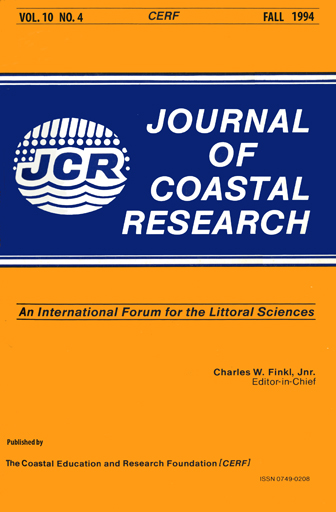Hydrologic Regimes of Tidal Channel-Salt Marshes Flow Systems, Fourleague Bay, Louisiana, U.S.A.
Keywords:
Wetland hydrology, surface flow, tidal channel, salt marshes, Four-league Bay, LouisianaAbstract
A hydrologic study of a meandering channel and its adjacent marshes on the south-central Louisiana coast (5 km from the Gulf of Mexico) has revealed a flow pattern different from that expected for a natural tidal channel (bayou). A network of constructed channels, ranging in size from the small trapper's channels 1.5 meter wide (called trainasses) to 30 meter wide petroleum-well access canals, has altered the hydrology of the natural bayou and the tidal regime of the adjacent marshes along the upper reaches of the bayou. Hourly water-level data, recorded at a marsh site in the upper reaches of the bayou show that the pattern of marsh inundation is characterized by sporadic flooding interspersed by long draining periods. The purpose of this study is to interpret the different flow circulation patterns observed in the bayou during two extensive field trips. These trips were in September and October 1991, during which strong continuous north and east winds prevailed. Those data are augmented by additional data sets taken in May and August 1992 and by other field observations showing the effects of man-made canals which have induced hydrologic changes in the area. These results indicate that the surface flow patterns in the upper reaches of the bayou have been decoupled from the lower reaches of the bayou because of the flow interception by man-made canals. The upper reaches of the bayou have then been filled in with sediments because of the reduction in flow velocity.


